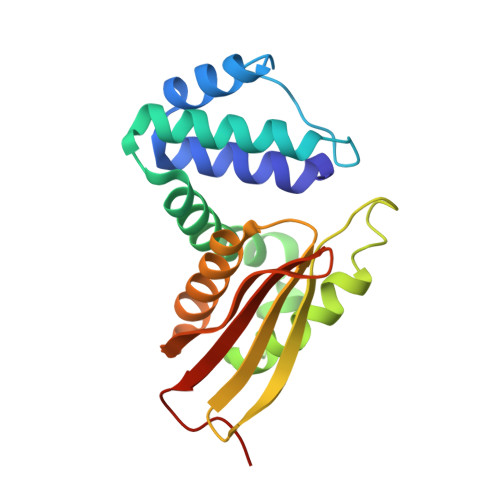Porphyrin-Substituted H-NOX Proteins as High-Relaxivity MRI Contrast Agents.
Winter, M.B., Klemm, P.J., Phillips-Piro, C.M., Raymond, K.N., Marletta, M.A.(2013) Inorg Chem 52: 2277-2279
- PubMed: 23394479
- DOI: https://doi.org/10.1021/ic302685h
- Primary Citation of Related Structures:
4IT2 - PubMed Abstract:
Heme proteins are exquisitely tuned to carry out diverse biological functions while employing identical heme cofactors. Although heme protein properties are often altered through modification of the protein scaffold, protein function can be greatly expanded and diversified through replacement of the native heme with an unnatural porphyrin of interest. Thus, porphyrin substitution in proteins affords new opportunities to rationally tailor heme protein chemical properties for new biological applications. Here, a highly thermally stable Heme Nitric oxide/OXygen binding (H-NOX) protein is evaluated as a magnetic resonance imaging (MRI) contrast agent. T1 and T2 relaxivities measured for the H-NOX protein containing its native heme are compared to the protein substituted with unnatural manganese(II/III) and gadolinium(III) porphyrins. H-NOX proteins are found to provide unique porphyrin coordination environments and have enhanced relaxivities compared to commercial small-molecule agents. Porphyrin substitution is a promising strategy to encapsulate MRI-active metals in heme protein scaffolds for future imaging applications.
Organizational Affiliation:
Department of Chemistry, California Institute for Quantitative Biosciences, Lawrence Berkeley National Laboratory, University of California, Berkeley, California 94720-3220, United States.















